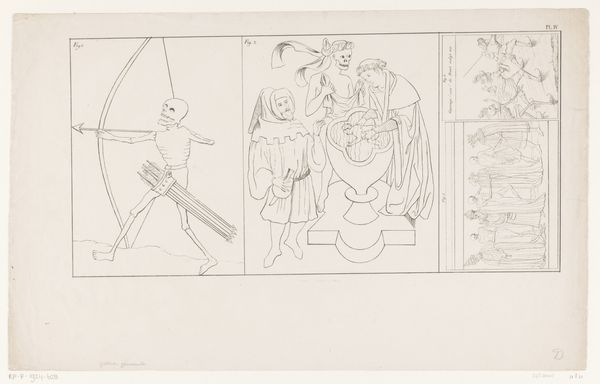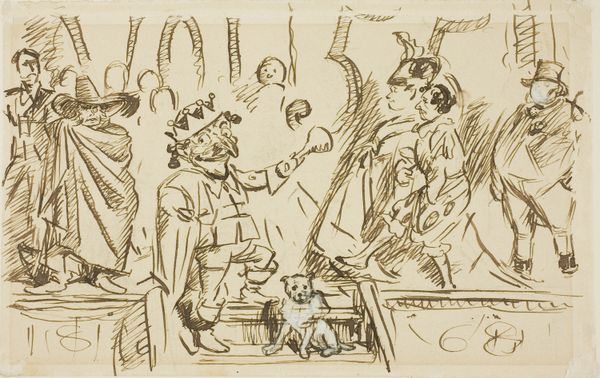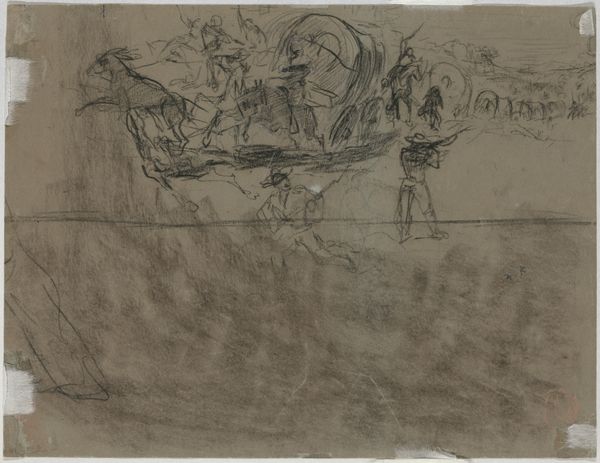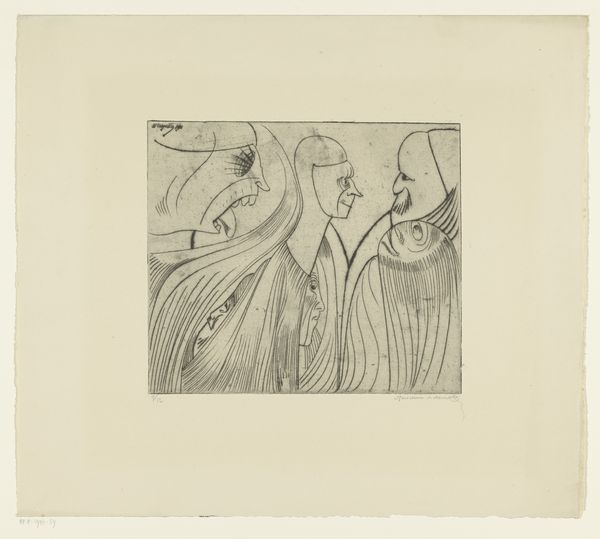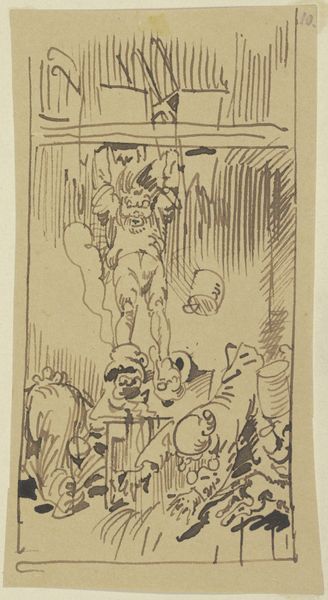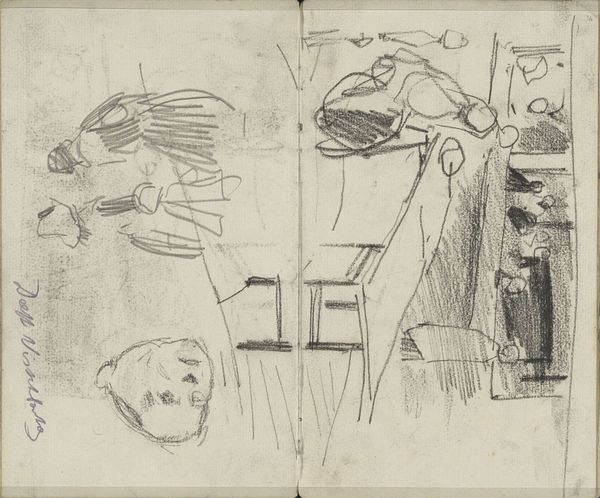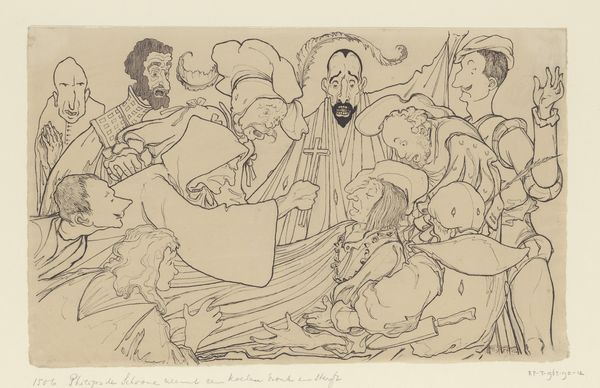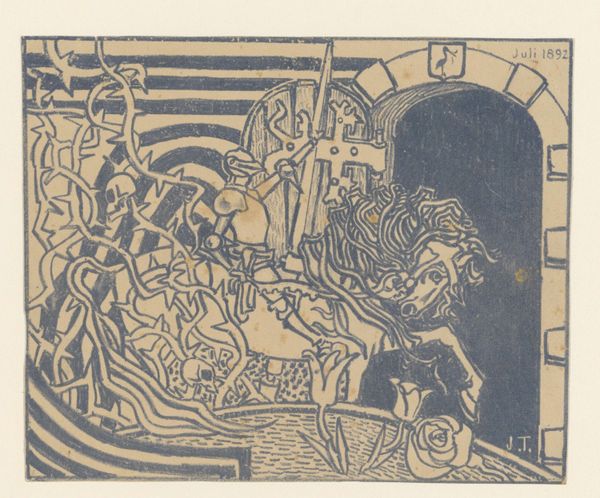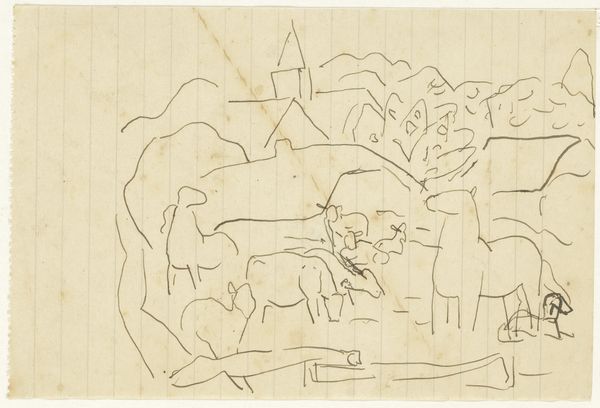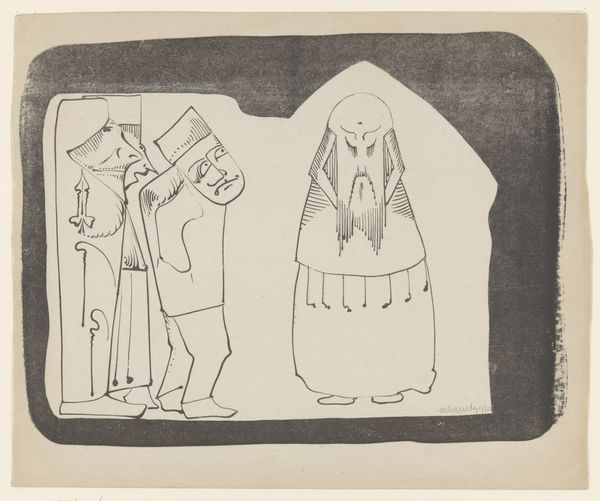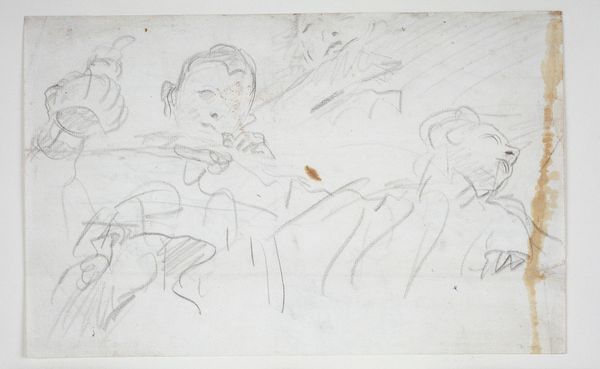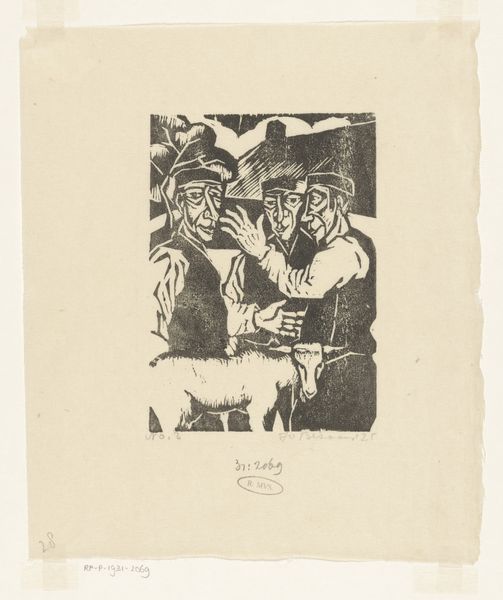
graphic-art, print, etching
#
graphic-art
#
toned paper
# print
#
etching
#
etching
#
figuration
#
line
#
modernism
Dimensions: height 170 mm, width 277 mm
Copyright: Rijks Museum: Open Domain
Curator: Immediately, I’m struck by the fragility of these figures—they’re practically ghosts rendered in the barest whisper of lines. It’s ghostly but present, as the weight of unseen generations peering from the frame. Editor: Well, let's orient ourselves. This etching on toned paper is titled "Elf Koppen," or "Eleven Heads," completed in 1922 by Samuel Jessurun de Mesquita. We see multiple faces crowding the composition. Curator: Eleven distinct entities perhaps, yes, but look closer. See how certain features are echoed and distorted throughout the composition, with subtle differences but unified look overall, mirroring subconscious fears and communal expectations. Each figure appears isolated, captured at various emotional angles to emphasize specific human responses, yet confined in an unyielding crowd—it echoes societal stress of its time in a raw and unfiltered way. Editor: De Mesquita uses the etching technique to wonderful effect. Those delicate lines and the limited tonal range give it this… dreamlike quality, that brings the figures closer, rather than separate them. The perspective is distorted, everything feels crammed into a shallow space. Curator: Right, that lack of conventional perspective creates this claustrophobic feeling. Those sharp angles forming the planes of faces, these evoke early modernism and hints at the rise of societal anxieties. Editor: Indeed. The way de Mesquita depicts them, all pressed together like sardines, sharing a psychic burden… I imagine that crowd could either turn on you or save you in an emergency. They share an uncanny semblance that is meant to haunt and unsettle. Curator: Which invites reflection on the shifting concept of communal identity as expressed through art during the shift in 20th century modernism; Mesquita captured society in that precise transition that could equally apply to the present-day pressures within rapidly shifting socio-political paradigms. Editor: And that's the enduring power of images—they resonate, they transform, they adapt their messages through time. They make us re-see the past, and re-imagine what we might be today, no matter how eerie, this picture of past can give us some pause. Curator: Indeed, the layered symbolism interwoven with social criticism in 'Elf Koppen', provides an eerie yet insightful window into both history and our own cultural memories.
Comments
No comments
Be the first to comment and join the conversation on the ultimate creative platform.


